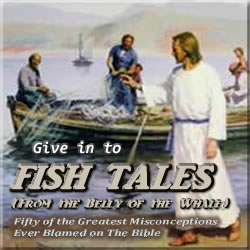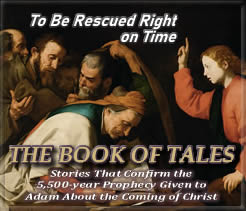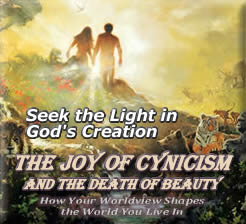The End (Cont’d)
Rising from the Ashes (Cont’d)
We now come to the point where I can present the aforementioned allegory, an allegory that reveals how a central truth of Enoch’s life story illuminates God’s intention toward humanity by way of His concealing and revealing His most precious truths. I would now like to remind the reader of one of the most enduring mythic figures known to mankind. It is the age-old story of a remarkable bird found throughout much of the world’s history, despite cultural differences across the globe. I am referring to that remarkable creature known as the Phoenix, which to the modern mind doubtlessly seems like just another fairy tale. Yet for the greater part of history and the world, it has clearly been nothing of the sort. In fact, the cultural traces of this legendary bird are so pervasive that it calls to mind the notion set forth by Italian historian Giambattista Vico, who insisted that “uniform ideas originating from entire peoples unknown to each other must have a common ground of truth.”1 Strange as it may seem, then, the story of the Phoenix appears to be one of those traditions that is just as resilient as the bird itself, as the following litany of believers would indicate.
According to ancient writers such as Herodotus, Tacitus, Pliny, and Ovid, the Phoenix resembled an eagle, with its vivid golden and scarlet feathers, and was said to perish in a burst of flames every five hundred years, only to be reborn, having risen from its own ashes. Because of this ability to rise again from the ashes, its legend has permutated the world over, becoming ever after associated with immortality and resurrection. To the Hebrews, it was connected with the eternal cycle of life; to the Egyptians, it symbolized rebirth; to the Persians, it was the bird of Paradise; to the Greeks and Romans, it conveyed the power of regeneration; and to the Chinese, it denoted completeness, harmoniously combining both yin and yang. It was this association with rebirth that naturally lent itself to the advent of Christianity, as a direct influence of either Hebrew or Greco-Roman thought. States The New World Encyclopedia:
Story Continues Below
Says Richard Price—the founder and CEO of Academia.edu—on his podcast In Depth With Academia:
The Book of Days: In Search of the 5,500-year Prophecy Given to Adam About the Coming of Christ is:
To hear Price’s book review of The Book of Days, CLICK HERE.
To hear Kent talk about the little-known biblical prophecy, which speaks of the 5,500-year chronology from Adam to Christ, with Zen Garcia, the host of the Internet talk show Secrets Revealed, CLICK BELOW.
Story Continues From Above
The ideology of the Phoenix fit perfectly with the story of Christ. The Phoenix’s resurrection from death as new and pure can be viewed as a metaphor for Christ’s resurrection, central to Christian belief… Most of the Christian-based Phoenix symbolism appears within works of literature, especially in medieval and Renaissance Christian literature that combined classical and regional myth and folklore with more mainstream doctrine.2
Even Leonardo da Vinci wrote about the famed bird, saying, “For constancy, the Phoenix serves as a type; for understanding by nature its renewal, it is steadfast to endure the burning flames which consume it, and then it is reborn anew.”3
This was not only the case for Christian theology, however, but included Jewish eschatological thought as well. According to Louis Ginzberg, “The Church Fathers, as well as the rabbis, refer to the Phoenix as a proof of the resurrection.”4 Concerning this association of the Phoenix with both Christian and Jewish theology, Roelof van den Broek, of Utrecht University in the Netherlands, wrote extensively in his book The Myth of the Phoenix.
In it, he cited a fifth-century Coptic manuscript called The Sermon on Mary, which describes a series of appearances of the creature in connection with three pivotal biblical events.
The first of these appearances took place when Abel made the sacrifice that found more favor in the sight of God than that of Cain… According to the Coptic text, thus, the Phoenix was consumed together with Abel’s sacrifice by the heavenly fire … as a type of Christ. According to the Coptic text, at the first sacrifice mentioned in The Bible, the bolt of fire was accompanied by an appearance of the Phoenix… The fire from Heaven is a sign that the event had divine approval; it legitimizes the sacrifice. The appearance of the Phoenix indicates that the event in question is, by God’s will, the beginning of a new time, of a new era in the history of salvation…
The second appearance of the Phoenix … mentioned in the Coptic sermon: “When God brought the Children of Israel out of Egypt by the hand of Moses, the Phoenix showed itself on the Temple of On, the city of the Sun…” Here again its manifestation marks the beginning of a new era in the history of salvation. Before the meaning of this can be elucidated, we must take up the third appearance of the Phoenix mentioned in the Coptic sermon.
In the year of Christ’s birth, the Phoenix is supposed to have burned itself on a pinnacle of the Temple at Jerusalem… The report of this burning begins with a sentence that at first seems rather puzzling: “According to the number of its years, it was its tenth time since its genesis after Abel’s sacrifice that it had sacrificed itself: In this year now the Son of God was born in Bethlehem.” The intention here is to fix the year of the birth of Christ, chronologically, by means of the Phoenix’s appearance every 500 years: 500 years must have preceded Abel’s sacrifice, and since there were ten more such periods after it, the birth of Christ must have taken place in the year 5,500 after the creation of the world. This is a concept we encounter frequently in early Christian literature…
In his Chronographia, Julius Africanus has divided the history of the world according to this scheme of six periods, each lasting one thousand years, in which he put the birth of Christ in the year 5,500. This had already been done previously by Hippolytus in his commentary on The Book of Daniel, the date having been derived from the dimensions of … The Ark [of the Covenant]…
The author of the Coptic sermon, therefore, drew on a familiar conception when he placed the birth of Christ in the year of the eleventh appearance of the Phoenix, i.e., in the year 5,500 after the creation of the world.5








